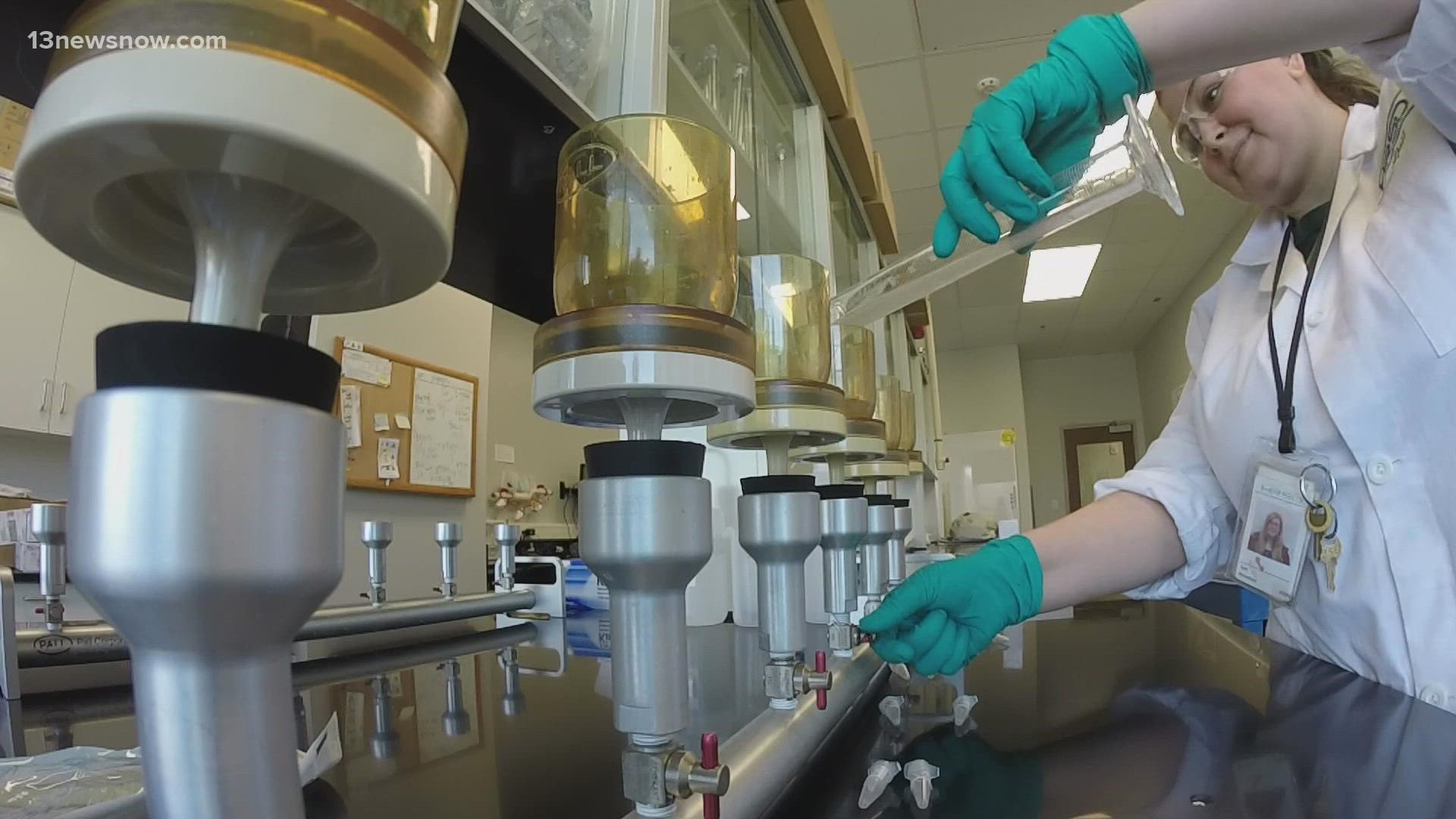NORFOLK, Va. — For almost two years to the date, more than 100 weeks, the Hampton Roads Sanitation District has tracked traces of COVID-19 in local wastewater.
It's been a useful tool behind the scenes of the pandemic. In 2022, scientists have turned their focus toward the chances Hampton Roads could see a surge of an emerging sub-variant.
“Very soon after we see it, it’s becomes the dominant strain," explained Kyle Curtis, an environmental scientist with HRSD.
HRSD monitors and sequences viral loads from samples across eight water treatment facilities in southeastern Virginia. According to Curtis, the omicron variant was the COVID-19 variant which contained the highest viral load during the entirety of the pandemic.
“As that concentration moves up, it means more infections," he said.
According to Curtis, the omicron variant was first detected in Hampton Roads waterways in early December, weeks before the variant's peak surge.
But with the peak in the rear view now, Curtis said their attention has shifted to the omicron sub-variant known as BA.2; sometimes referred to as "Stealth Omicron."
Curtis said HRSD doesn't have a test fully developed yet to track that specific strain in wastewater, but the sequencing information does exist and they’re working to bring it into the fold.
"That’s the goal. Do what we did for Delta and Omicron [variants]," Curtis said.
In their last batch of waste water samples, Curtis said the existing viral trends have changed slightly, but it’s unclear if this is a predictor of any possible rise in cases. He attributed them to the possibility of a "weak signal" and not a cause for alarm at the moment.
“Three of the sites [out of eight] showed declining concentrations, the others showed minor, modest increases but no big spikes. The recent trend we’ve seen for the past 5-6 weeks of declining concentrations, took a turn in the last sample.”

